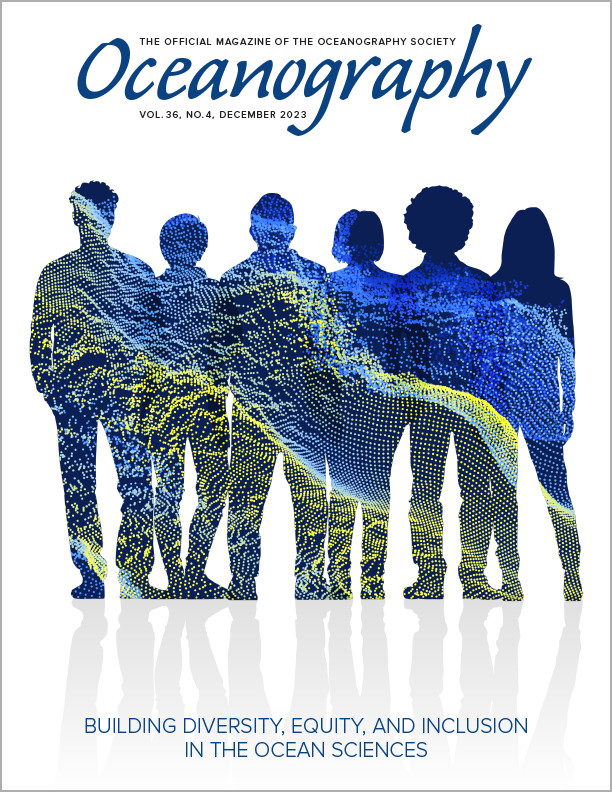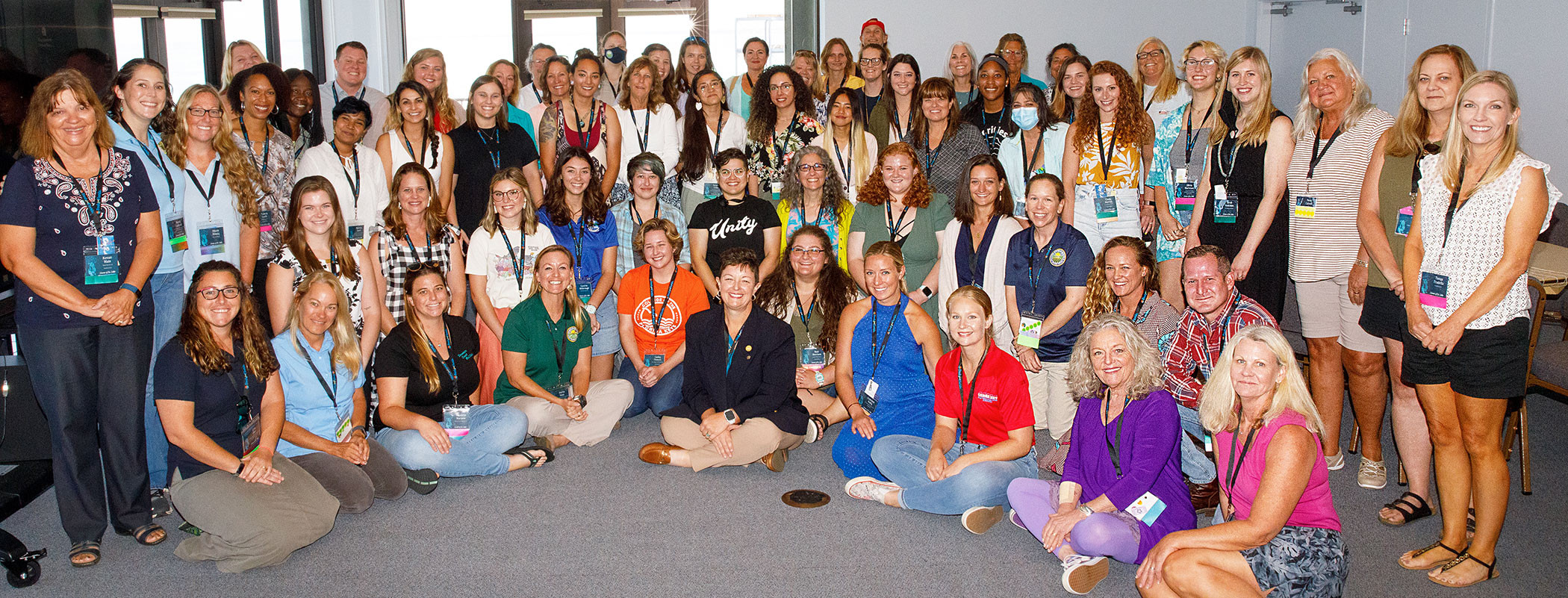Full Text
Introduction
Gender equity in fisheries and aquaculture is a consequential economic, social, and human rights global issue. Women are the backbone of the seafood and aquaculture industry worldwide, but their contributions are often undervalued or unrecognized. While women are increasingly entering the field and leading in aquaculture (e.g., Kobell, 2020), opportunities have generally not kept pace with industry growth, despite aquaculture being the fastest-growing food production sector globally. This dearth is attributed to inequities in training, financing, and decision-making power, among other institutional and systemic socio-cultural, economic, and political factors (FAO, 2016; Brugere and Williams, 2017). As aquaculture requires training and competencies in a breadth of ecology, biology, oceanography, and technology subjects, individuals in the discipline often share similar educational or professional experiences as peers in other ocean science fields. Consequently, aquaculture is affected by many of the same structural barriers that hinder diversity, equity, inclusion, and accessibility (DEIA) in ocean sciences generally.
To help meet critical needs for DEIA in aquaculture, Women of the Water (WoW) was established in 2022. WoW aims to alleviate structural barriers and inequities encountered by people from underrepresented groups in aquaculture: lack of diverse mentorship, financial hurdles to participation in professional development, scarcity of professional training opportunities, and minimal exposure to varied career options. WoW was envisioned as a professional aquaculture network centered on the needs and experiences of women, gender-diverse people, and people from other marginalized identities. WoW was inspired by the organizers’ 60+ years of collective lived experiences working, teaching, and mentoring in aquaculture. The vision of WoW is to build community through connection and empowerment, catalyze learning and interdisciplinary collaboration, and enhance professional development opportunities in aquaculture for marginalized and underrepresented groups.
Program Description
The inaugural WoW conference was held over two days in June 2022 at the Mote Marine Laboratory and Aquarium in Sarasota, Florida. Programming focused on highlighting and uplifting the experiences of people from underrepresented and marginalized groups and creating spaces for open and honest dialogue, networking, and skill building. We also aimed to capture data on gender disparities in aquaculture and empower attendees through positive and tangible actions.
Our keynote speaker, the 2021 Florida Woman of the Year in Agriculture, set the stage with a powerful opening address. Three roundtable discussion sessions (facilitated by attendees) featured topics on challenges for women and people from other marginalized groups and considered opportunities for making aquaculture more diverse and inclusive. There were multiple informal and scheduled opportunities for networking and a variety of avenues for showcasing research and creative work, including 10 oral and 15 poster presentations and a photo and film contest. Five hands-on workshops—Water Quality 101, Personalities in the Workplace, Fieldwork Safety, DEIA in Aquaculture, and Aquaculture Best Practices—also enabled attendees to gain exposure to a variety of professional development and skill-building opportunities.
The conference drew almost 80 attendees from five states, representing multiple career paths and experience levels, from undergraduates to retirees (Figure 1). A broad cross section of self-identified stakeholders participated, including students (30%); farmers, processors, and wholesalers (50%); academics (49%); education, communication, and extension professionals (31%); and other professionals (19%) in policy, nongovernmental organizations, and regulatory agencies. Additionally, 37% of attendees self-identified as being part of more than one stakeholder group. Unfortunately, given limitations of the host organizations, we could not collect attendee demographic data. Anecdotally, we can confidently say that our attendees represented an array of gender, age, race, disability, immigration status, and LGBTQIA+ identities and experiences.
|
|
Results
When discussing barriers faced in the field, early-career attendees cited lack of mentorship, exposure to career diversity, and opportunities for technical skill building as roadblocks to retention and advancement. Nearly all attendees acknowledged that navigating the male-dominated field has involved difficult social interactions, unsupportive or hostile working environments, and additional pressure to “prove oneself” in order to be taken seriously. When asked about increasing inclusion and a vision for the future of aquaculture, attendees suggested a greater environmental focus, more opportunities for youth, increased collaboration within and outside of academia, and inclusion of more elected officials and policymakers, wild resource fisherfolk, Indigenous communities, and the LGBTQIA+ community. A more detailed analysis of our discussions can be found in the full conference report on the WoW website (https://womenofthewater.wixsite.com/conference/wotw2022).
Lessons Learned
WoW’s success can be attributed to intentional programming, leading from a foundation of strong values, and leveraging relationships for fruitful collaborations. Candid attendee feedback highlighted the importance and need for events and initiatives specifically focused on underrepresented communities in aquaculture. Notably, multiple attendees shared that they felt their lived experience and perspective was valued in discussions. Additionally, many reported that they appreciated the low cost of registration, plentiful refreshments, and attention to detail that was given to all aspects of the event.
Important lessons that can be instructional for others, including challenges and growth opportunities, are as follows:
- Plan for broad participation. We invited a wide range of participants with intergenerational and intersectional perspectives. This participant diversity was critical for discussions, where many different ideas were presented about the challenges, potential solutions, and visions for the future of aquaculture. This diversity also allowed for unique networking and learning opportunities among attendees.
- Lead with your values. We stated our intentions for WoW early and often, remained unapologetically focused on values of equity and inclusion, and did not shy away from having hard discussions. We centered the voices and perspectives of people from underrepresented groups in the workforce. An explicit code of conduct was printed in our program and read aloud as part of the conference opening. This year, we are further adapting the code of conduct and expanding the program to include an Indigenous land acknowledgment.
- Set the tone for inclusion and empowerment. We intentionally and explicitly set the expectation from the beginning that WoW would be a safe space for anyone to share their experiences and perspectives, ask questions, be vulnerable, and learn; we stated this during opening remarks and in the code of conduct. We had honest and timely conversations that were driven by salient questions on challenges and opportunities for building equity and inclusion in the field. Roundtable discussions were designed to prompt ideas for action and empowerment. We encouraged participants to interact with new colleagues and those outside of their immediate peer or stakeholder group during networking and roundtable sessions.
- The practice of “stories stay, but lessons leave” grounded our discussions. This practice hinges upon specific details of personal stories staying with the group (“stories stay”), but major lessons from stories being taken out into our workplaces and broader communities (“lessons leave”). This practice builds trust and allows for more vulnerable and honest discussion.
- Create multiple engagement opportunities. Programming showcased research through oral and poster presentations, highlighted stories of lived experiences, incorporated time for both scheduled and organic discussions and networking, and provided opportunities for skill building and creative engagement. These varied opportunities allowed attendees to explore many facets of the aquaculture field, engage with and learn from others whom they might not otherwise encounter, and employ different skill sets in a professional setting. Information was presented in multiple formats to appeal to various learning styles and to increase inclusion.
- Leverage existing relationships. We leveraged our network to build strong partnerships and a cohesive team. The steering committee was composed of professionals from the nonprofit research and education arena, academia, state government, and extension, all with different personal and professional expertise to contribute. Critical funding, as well as advertising support, drew on strong existing relationships and came from a number of organizations, industry associations, and private businesses.
- Plan to learn and improve. We provided multiple opportunities for anonymous participant feedback, both in person during the conference and virtually post-conference. We used participant feedback to expand programming and enhance the 2023 WoW experience to better meet the needs of our community. For example, we hosted a mentoring program to support professional development of both mentors and mentees, and provided student travel scholarships to further reduce financial barriers to participation. This year, we were able to collect demographic data with registrations, which we hope can contribute to strengthening quantitative information on women, gender-diverse people, and people from other marginalized groups in aquaculture.
- Recognize that growth can be both exciting and challenging. We exceeded our own expectations with our inaugural WoW conference; there was a lot of excitement for the second conference in fall 2023. Securing funding, building capacity, managing the group long term, and determining how to grow at a manageable scale will all be ongoing challenges. These will be hurdles for any new or growing DEIA initiative; it is critical to discuss these issues honestly, recognize and honor your limitations, and build a realistic plan for moving forward. As part of our program’s growth, we are expanding our leadership team and steering committee, and will build a team that is diverse in all aspects of experience and identity. We will also continue to utilize WoW as a platform for connecting, collaborating with, and amplifying other organizations that are working to build gender equity in ocean science, fisheries, and aquaculture.


